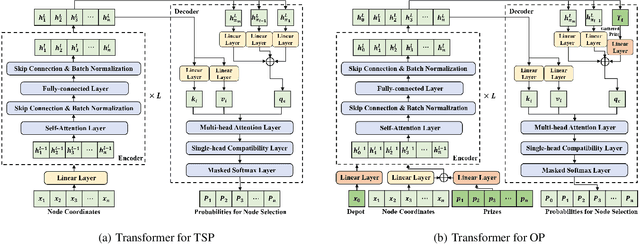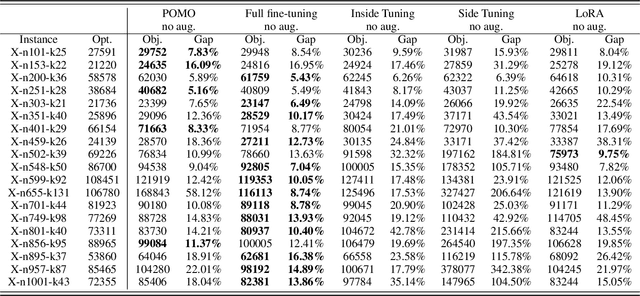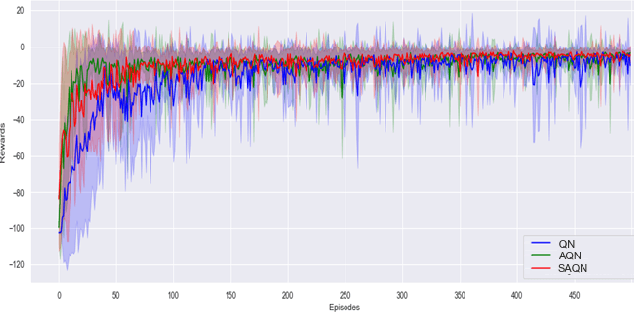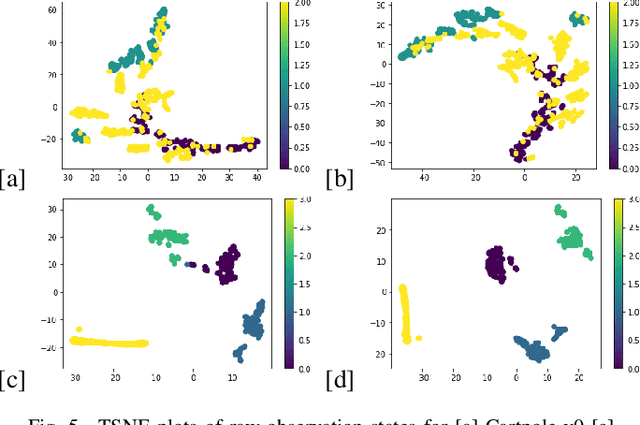Bangjian Zhou
Cross-Problem Learning for Solving Vehicle Routing Problems
Apr 17, 2024



Abstract:Existing neural heuristics often train a deep architecture from scratch for each specific vehicle routing problem (VRP), ignoring the transferable knowledge across different VRP variants. This paper proposes the cross-problem learning to assist heuristics training for different downstream VRP variants. Particularly, we modularize neural architectures for complex VRPs into 1) the backbone Transformer for tackling the travelling salesman problem (TSP), and 2) the additional lightweight modules for processing problem-specific features in complex VRPs. Accordingly, we propose to pre-train the backbone Transformer for TSP, and then apply it in the process of fine-tuning the Transformer models for each target VRP variant. On the one hand, we fully fine-tune the trained backbone Transformer and problem-specific modules simultaneously. On the other hand, we only fine-tune small adapter networks along with the modules, keeping the backbone Transformer still. Extensive experiments on typical VRPs substantiate that 1) the full fine-tuning achieves significantly better performance than the one trained from scratch, and 2) the adapter-based fine-tuning also delivers comparable performance while being notably parameter-efficient. Furthermore, we empirically demonstrate the favorable effect of our method in terms of cross-distribution application and versatility.
Self-evolving Autoencoder Embedded Q-Network
Feb 18, 2024



Abstract:In the realm of sequential decision-making tasks, the exploration capability of a reinforcement learning (RL) agent is paramount for achieving high rewards through interactions with the environment. To enhance this crucial ability, we propose SAQN, a novel approach wherein a self-evolving autoencoder (SA) is embedded with a Q-Network (QN). In SAQN, the self-evolving autoencoder architecture adapts and evolves as the agent explores the environment. This evolution enables the autoencoder to capture a diverse range of raw observations and represent them effectively in its latent space. By leveraging the disentangled states extracted from the encoder generated latent space, the QN is trained to determine optimal actions that improve rewards. During the evolution of the autoencoder architecture, a bias-variance regulatory strategy is employed to elicit the optimal response from the RL agent. This strategy involves two key components: (i) fostering the growth of nodes to retain previously acquired knowledge, ensuring a rich representation of the environment, and (ii) pruning the least contributing nodes to maintain a more manageable and tractable latent space. Extensive experimental evaluations conducted on three distinct benchmark environments and a real-world molecular environment demonstrate that the proposed SAQN significantly outperforms state-of-the-art counterparts. The results highlight the effectiveness of the self-evolving autoencoder and its collaboration with the Q-Network in tackling sequential decision-making tasks.
Evolving Restricted Boltzmann Machine-Kohonen Network for Online Clustering
Feb 14, 2024



Abstract:A novel online clustering algorithm is presented where an Evolving Restricted Boltzmann Machine (ERBM) is embedded with a Kohonen Network called ERBM-KNet. The proposed ERBM-KNet efficiently handles streaming data in a single-pass mode using the ERBM, employing a bias-variance strategy for neuron growing and pruning, as well as online clustering based on a cluster update strategy for cluster prediction and cluster center update using KNet. Initially, ERBM evolves its architecture while processing unlabeled image data, effectively disentangling the data distribution in the latent space. Subsequently, the KNet utilizes the feature extracted from ERBM to predict the number of clusters and updates the cluster centers. By overcoming the common challenges associated with clustering algorithms, such as prior initialization of the number of clusters and subpar clustering accuracy, the proposed ERBM-KNet offers significant improvements. Extensive experimental evaluations on four benchmarks and one industry dataset demonstrate the superiority of ERBM-KNet compared to state-of-the-art approaches.
Quantile Online Learning for Semiconductor Failure Analysis
Mar 13, 2023



Abstract:With high device integration density and evolving sophisticated device structures in semiconductor chips, detecting defects becomes elusive and complex. Conventionally, machine learning (ML)-guided failure analysis is performed with offline batch mode training. However, the occurrence of new types of failures or changes in the data distribution demands retraining the model. During the manufacturing process, detecting defects in a single-pass online fashion is more challenging and favoured. This paper focuses on novel quantile online learning for semiconductor failure analysis. The proposed method is applied to semiconductor device-level defects: FinFET bridge defect, GAA-FET bridge defect, GAA-FET dislocation defect, and a public database: SECOM. From the obtained results, we observed that the proposed method is able to perform better than the existing methods. Our proposed method achieved an overall accuracy of 86.66% and compared with the second-best existing method it improves 15.50% on the GAA-FET dislocation defect dataset.
 Add to Chrome
Add to Chrome Add to Firefox
Add to Firefox Add to Edge
Add to Edge